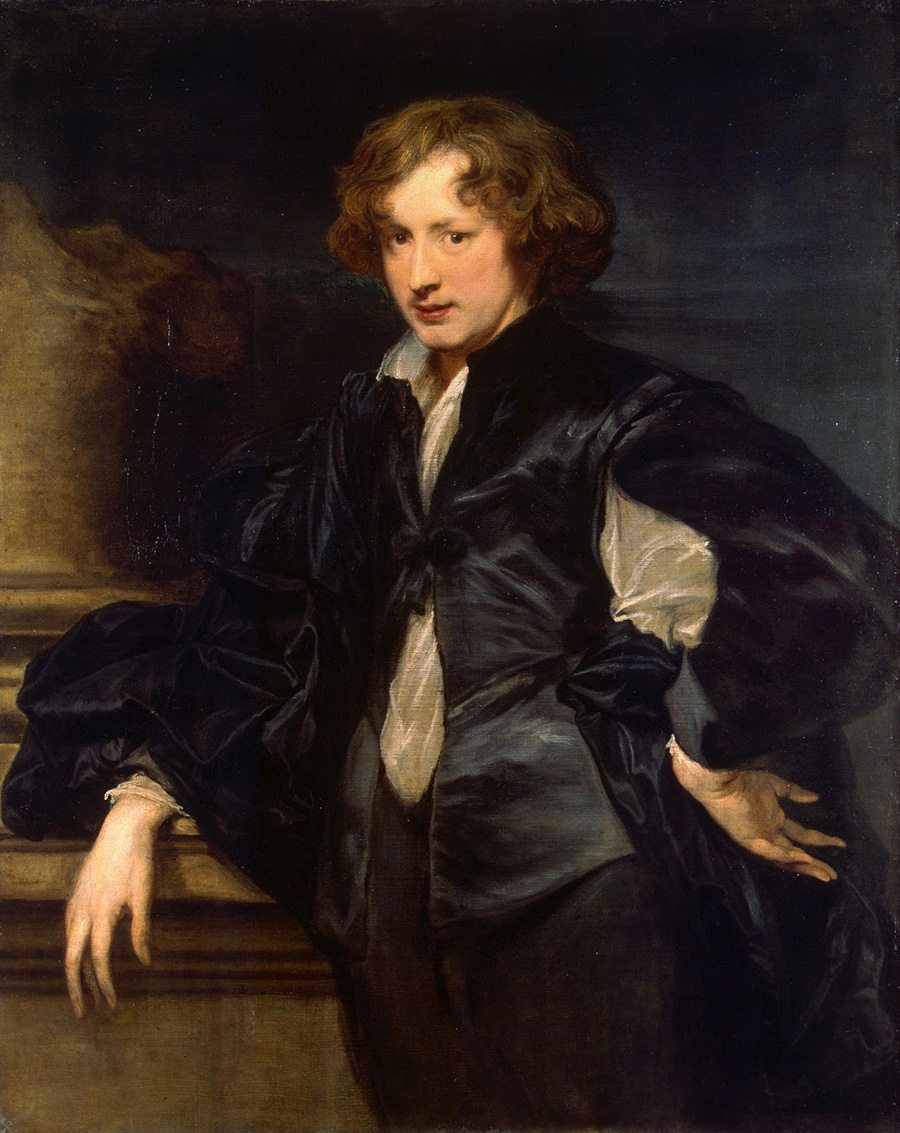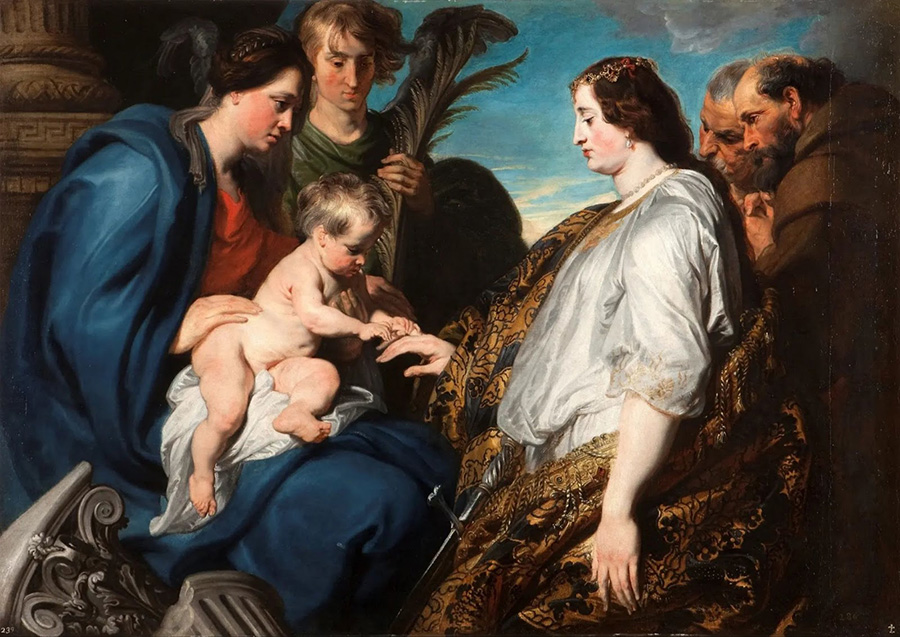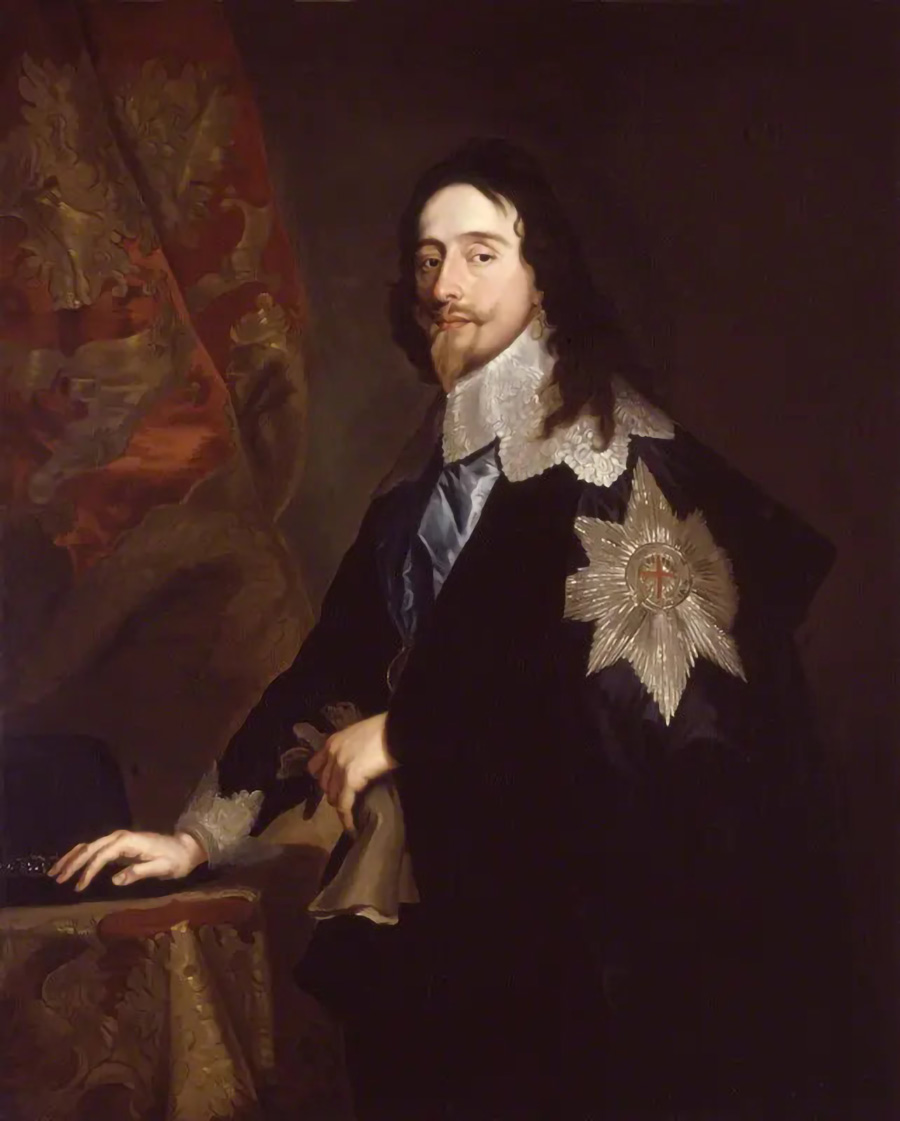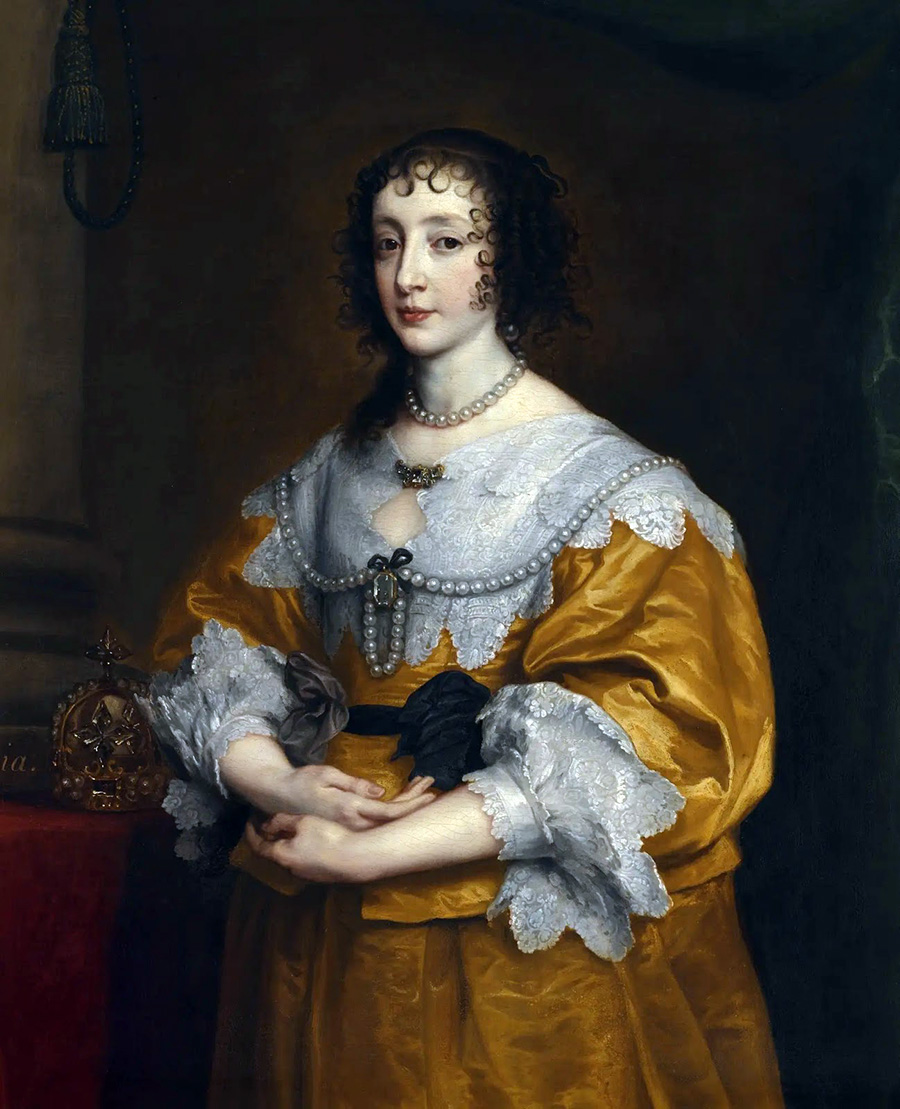
Anthony van Dyck 22.03.1599 – 09.12.1641 — Flemish painter, draughtsman and etcher, master of court portraits, religious and allegorical scenes. He was a true child prodigy, having already painted a self-portrait at the age of 14, and this work would give many adult artists a run for their money. Technically, the portrait is very well painted, and the white collar, elegantly drawn with a single white line, is particularly impressive.

Anthony van Dyck. Self-portrait.
But what was most striking was his extraordinary mind and his desire to achieve a lot in this life, to prove his extraordinary talent to everyone. It's good that all this came true.
Anthony was born into a wealthy and religious family in Antwerp. He had 11 brothers and sisters - a common thing in those days, there were always many children in families, but unfortunately not all of them lived to adulthood. The brothers became priests, the sisters nuns, the most talented and capable continued the family business, and Anthony's fate was largely predetermined - he had to become a painter. In Antwerp, painting was considered a perfectly dignified profession, Rubens worked there, artists of lower rank united in the Guild of St. Luke. When Anthony was 10 years old, he was sent as an apprentice to the artist van Balen, where he proved himself so well that he was given the opportunity to study with Peter Paul Rubens himself.
Apostle with Folded Hands - Anthony van Dyck. 1618-1620
Outwardly, Rubens' education seemed quite respectable, and the relationship between teacher and student seemed idealistic. Rubens painted portraits and appointed van Dyck as his first assistant. In return, van Dyck painted portraits of his teacher and his wife. But the spirit of rivalry was still present, and the proud and ambitious van Dyck felt it especially keenly. He was already not much inferior to his teacher in talent and technique. It is said that one day Rubens painted a picture and went about his business. The students began to examine it carefully, and one clumsy future artist touched a layer of paint that had not yet dried, hopelessly smearing his sleeve on the canvas. But van Dyck came to his friend's rescue, correcting the picture so carefully that it was impossible to notice.

Anthony van Dyck. Self-portrait.
And when van Dyck turned 20, rumors began to spread among customers: "Van Dyck paints like Rubens, but charges much less, you should order portraits from him before he gets arrogant and raises the price". Rubens was already getting seriously jealous, and van Dyck was already tired of being in the position of a student.Portrait of Cornelis van der Geest by Anthony van Dyck. 1620
Lucas van Uffelen - Anthony van Dyck Lucas. 1622
After London, van Dyck went on a journey through Italy that lasted 6 long years. There he departed somewhat from Rubens' style of painting and at the same time decided on a genre - portrait, although he sometimes painted pictures on mythological and religious themes.

The Mystical Marriage of Saint Catherine
In 1627, van Dyck returned to Antwerp for family reasons, and it turned out that Rubens had left to complete a large commission for the English King James I. But Rubens soon returned and had to make room. However, Rubens soon returned and had to make room; the lucrative commissions again went to Rubens, which was unbearable for the ambitious van Dyck. He traveled around Europe, worked a lot, but it was useless to compete with Rubens' fame. The situation was saved by the English King Charles I - a great lover of painting, who decided that van Dyck should be his court artist.

Portrait of King Charles I
And here it all came together: recognition from the king and aristocrats, excellent earnings - 200 pounds a year, his own mansion and even a peerage. Van Dyck painted 400 pictures in England, spending an average of one week on a portrait, and doing his work with impeccable skill. He was able to portray his aristocratic patrons as sublime, full of heroic aspirations, and his ladies as graceful and sensual. Impeccable elegance, a dancing brush - art critics have been raving about van Dyck's paintings for 400 years. They recognized him as the finest master of ceremonial aristocratic portraiture in history, and van Dyck truly reached unprecedented heights in this genre.

Portrait of Queen Henrietta Maria
Another problem is that it was easy and natural for him to flatter, so he shamelessly embellished his clients. The people in Van Dyck's portraits have immaculately clean faces without pockmarks or scars, which was completely untrue. It was just that smallpox was widespread in those days, there were outbreaks, even epidemics, and not everyone managed to avoid contracting the disease at least once in their lives.
Susanna and the Elders - Anthony van Dyck. 1621-1622
And there is no need to think that the thoughts and intentions of all these aristocrats corresponded to their elevated appearance, although there were certainly decent people among them. But such is the peculiarity of the genre, and none of the aristocrats was interested in the unpleasant truth of life, as in the paintings of Pieter Bruegel the Elder, but they really wanted to leave their portrait as a memento to their descendants, where they are portrayed in the most dignified form.

Thomas Wentworth, 1st Earl of Strafford
However, if we analyze van Dyck's self-portraits, of which he painted many, we can understand that the main motive that determined the artist's actions was vanity. They are too pompous and arrogant, van Dyck's facial expression often says one thing: "you will all bow before my talent as a painter."

Anthony van Dyck. Self-portrait.
He was also very contradictory - reclusive, but at the same time he loved noisy celebrations in his honor, he was extremely polite, even uninhibited, but often indulged in bouts of melancholy, like the wonderful Russian landscape painter Isaac Levitan. He even married the king's maid of honor to amuse his ego.
Cupid and Psyche - Anthony van Dyck. 1639-1640
Van Dyck lived like a rich aristocrat and did not save on his expenses. He had a long relationship with his model, Margarita Lemon, a very eccentric and jealous woman. When it became known that Van Dyck had married the royal lady-in-waiting, she created a serious scandal, attacked the artist with beatings and curses, and even tried to bite off his finger so that he could no longer paint. At least she didn't succeed.

The five children of King Charles I
When Rubens died in 1640, van Dyck received an invitation from King Philip IV of Spain. He was overjoyed - the Spanish royal court was even more luxurious - but it turned out that all he had to do was finish the paintings Rubens had started. "He managed to laugh at me even in his grave," said the ambitious van Dyck. But he did not have long to live - he died of an unknown illness at the age of 42, leaving behind many magnificent portraits and the fame of being the best ceremonial portraitist in history.
Buy handmade goods or modern art you can on artAlebrio - is an international marketplace for people who want to create, sell, buy and collect unique items and art - buy the best with us artAlebrio.com.
By confirming your order you unconditionally accept these General Conditions of Sale